Beer in London
1. Terminology and style.
This is the time of year when hordes of eager Americans, some of them caught in the limbo between the civilized British drinking age of eighteen and the restrictive American one of twenty-one, descend on London for their first time, or at least for the first time they can drink there. Not all of these people are beer geeks, so here at britishfoodinamerica we thought it might be helpful to some of them to offer a primer on British beer.
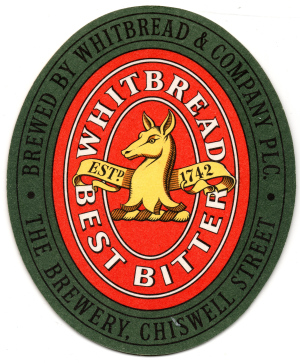
British lager beers are, in the main, not worth drinking. They are inferior to their counterparts from any other country, and even the ‘imports’ often are in reality impostors brewed under license in the United Kingdom, with adjuncts and other inferior ingredients not found in the authentic foreign originals.
To keep things confusing, the British refer to both bottom fermented beer and top fermented ale as ‘beer;’ what we call beer usually is called simply ‘lager,’ whether or not it is made in a true lager style. When yeasts used for fermentation sit on top of the liquid that will become ale, they can pick up strains of wild yeast entrained in the atmosphere. That leavening helps to make ales both more difficult to brew to a consistent level of uniformity and quality control, and also more complex and better tasting.
Ales are altogether different, and among the best beers in the world. In public houses, bars and restaurants you want to look for cask ales pumped by hand rather than the carbonated versions that dominate the United States market. Cask ales spoil more quickly and are harder to maintain but they have incomparable complexity and depth of flavor. If you cannot get cask ale, however, there are a number of good bottled ones, just not as good. ‘Keg,’ or carbonated draft beer from an electric pump, is best avoided.
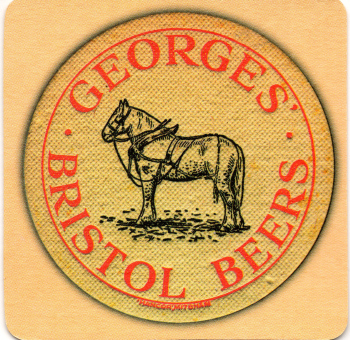
Ales come in a range of styles, although British brewers tend not to go to the alcoholic extremes of the double and triple IPAs, really barley wines or malt liquors, that American craft brewers like to produce. This is a matter both of tax and taste. Nonetheless the alcohol content of draft beer crosses a wide range in Britain; the percentage of it is, however, always printed on the label affixed to the pump. In general more alcohol equals bigger flavors but that is not always the case.
British styles range from ‘mild,’ now seldom encountered outside the North, through light ales, pale ales and porters, also now scarce, to traditional India Pale Ales. Brown ale is a crude sweet style to forego. We also recommend the avoidance of Samuel Smith products for the same reason, which is a shame because the John Snow in Soho is a pretty pub on a historic site that is handy to Andrew Edmunds, whose restaurant and print gallery both have received favorable reviews from britishfoodinamerica. There also, of course, is stout.
Mild is as it sounds, a relatively bland but refreshing beer without much hop content. It usually has very little alcohol either, but otherwise is something like a German or American dark beer except that it is (top fermented) ale rather than (bottom fermented) beer.
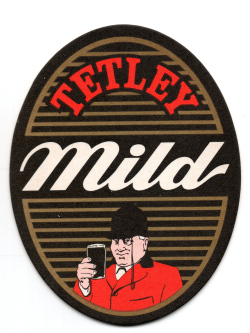
There is considerable overlap in style among the various beers labeled light or pale ale. Collectively all ales other than mild often are called simply ‘bitter,’ but never ‘bitter ale,’ as in ‘a pint of bitter please,’ whether or not in fact they have a bitter taste. Most serious brewers make at least two grades of bitter, a lower alcohol version often called ‘best’ or ‘ordinary’ bitter, and higher alcohol versions known either as ‘special’ or sold under a proprietary name; the Courage brewery, for example, calls its special bitter ‘Directors,’ which, incidentally, is a robust, relatively sweet beer with a nice hoppy finish; recommended.
Similarly, some special bitters veer toward IPA in style, and some of the less flavorful IPAs taste more like special (or Directors). IPAs are characterized by high hop content and relatively high alcohol content, which both acted as preservatives to give ale the longer shelf life required by the long voyage out to India in the age of sail. The British exported a lot of beer to the Raj because ale could be difficult to brew in the tropics before the advent of climate control.
The increased proportion of hops also gives classic IPAs their tangy bitter aftertaste. Depending on the hops or blend of hops used to brew the IPA, the finish will have tones that are described as either floral or fruit or citrus; you will recognize the difference when you taste the various IPAs.
Both porter and stout are dark ales. Porter is lighter in body but sometimes higher in alcohol than stout; despite its deep color, porter is refreshing. Stout is more robust and comes in a range of styles from relatively the relatively dry Irish style (Beamish, Murphy’s, Guinness) to sweet styles (like Samuel Smith) sometimes called ‘milk’ or ‘cream’ stouts that are cloying. The worst exemplar of the sweet style is Mackeson’s, which is virtually undrinkable. “Oyster’ stout may or may not be brewed with a little oyster liquor and is considered a style particularly suited to shellfish. When you can find it, it tends to be very good.
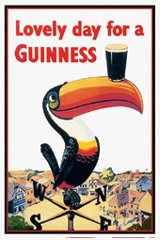
These descriptions refer to draft porter and stout. Bottled stout, including the many different versions of Guinness brewed all over the world, usually have a lot more strength than the draft versions, as much as more than twice as much.
2. Public houses.
Good pubs sell good beer. Cask ales require conditioning onsite, and frequently cleaned pumping systems to prevent spoilage, so fastidious landlords, as all pub managers are known, are essential. In addition to recommending various cask ales we therefore recommend some pubs, particularly important for London where it is so easy to turn a profit in central districts that even places that sell inferior beer can turn a handsome profit.
Some pubs are ‘tied houses,’ that is, owned by a particular brewer and others are ‘free houses,’ or independent establishments free to sell whatever they like. In the past ‘tied’ pubs served only products brewed by the owner; the exception always has been Guinness, however, which no pub landlord could do without. If you are in a pub that generally only serves inferior beer, then draft Guinness, which despite urban myth is quite low in alcohol, is a good bet, especially since the Guinness brewery outside London at Park Royal has closed and the stout sold in Britain now comes from Dublin. These days even tied houses tend to offer more variety of draft beer brands than in the past because they feature weekly ‘guest beers’ from other brewers.
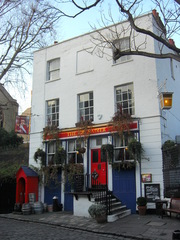
The Grenadier
Our recommendations are Old School, traditional public houses that care about their beer. We will head roughly west to east. In Belgravia, the Antelope, the Grenadier and the Star all are attractive spots that take care of their beer. Both the Grenadier and Star are tucked within winding mews and worth finding. The loss of the Turk’s Head, a bartender’s bar of choice, is much lamented.
The Bunch of Grapes, on Knightsbridge in Knightsbridge, is a Victorian exemplar handy to both Harrods and the V & A, the best of London’s many brilliant big restaurants.
Off Jermyn Street, the Red Lion in Duke of York Street is a miniscule Victorian gin mill resplendent with cut and colored glass. They have small sandwiches at lunchtime, a convenient break from shopping for all those shirtings, ties and haberdashery. The Blue Posts nearby, diagonal to the loathsome Caprice restaurant, is a pleasant enough barn if the Red Lion is overmobbed.
It is a surprise, but otherwise arid Mayfair supports a clutch of outstanding pubs. They include the big Edwardian Audley in Audley Street, where the carve turkey off the bird and ham off the bone to order for sandwiches. The Grapes, in what used to be the red light Shepherd’s Market, looks just like was built in the 1880s both inside and out; no Georgian austerity here, but rather a splendid imperial ecstasy of artifacts and oddities within. The Guinea just off Berkeley Square, an atmospheric room fronting the exorbitant steakhouse of the same name above and behind, is justly proud of the steak & kidney pies it serves right out of the metal bowls in which they bake. The recipe is posted over the urinals in the men’s toilet. The little Punch Bowl in Farm Street dates from the middle of the eighteenth century and therefore is architecturally clean and cozy. Before the smoking ban, entering the place felt like hot boxing without the cannabis buzz but now it is more than a tenable option despite the fact the Guy Ritchie reputedly owns a piece of its action.
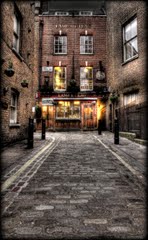 The Lamb & Flag
The Lamb & Flag
In Covent Garden, three of the best are the Cross Keys, the Lamb & Flag and the Marquess of Anglesey. It is best to approach the Lamb & Flag, our favorite, through the covered alley off Floral Street; one of the more dramatic urban entries for a small space anywhere. The place dates from the seventeenth century and, as tedious devotees like the Editor know, Pepys drank there and Dryden called it the Bucket of Blood because he got beaten up there.
Slightly south in St. Martins Lane, the Salisbury frequently and justifiably is held out to be a paragon of the Victorian gin palace at scale, and the beer is better than it used to be.
In Soho, the Coach & Horses is justifiably famous but our favorite is the tiny tiled Dog & Duck. They always have a well kept selection of excellent ales, often including Timothy Taylor’s Landlord, and serve more than decent bar food.
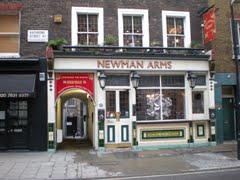
The Newman Arms
In Fitzrovia, the Newman Arms in Rathbone Place is similarly small. If it lacks the selection at the Dog & Duck, it always serves Fuller’s London Pride and has the stupendous pie room upstairs; low prices, best savory pies and two handsful of tables, so book.
In Bloomsbury, the Lamb in Lamb’s Conduit Street is a big and beautiful pub with an eighteenth century-style center island and good food at lunchtime. It is a Young’s pub so the beer always is better than good; good shopping all along and off of Lamb’s Conduit Street gives you an excuse to go.
Barely north and a bit farther east on Holborn, the Princess Louise is a big place with famously commodious urinals, its barroom recently restored to high Victorian glamour. It has many many kinds of good beer.
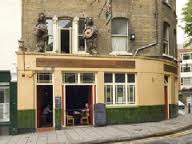
The Three Kings
Just off the Common in Clerkenwell, The Three Kings is friendly and bustling and stocked with reliably good cask ales; these days the monarchs are Henry VIII, Elvis and Kong. It is an easy walk to Moro, the Quality Chop House and St. John, three proofs of London’s newfound dining ascendancy. The Eagle in Farringdon Road, the first of the gastropubs, also lies nearby.
The white hot East End retains a few of its traditional public houses but also supports several well-received gastropubs that are not bad of the type, because they let you drink there without eating and care about the quality of the things they serve, including the beer. In the dieseled and noisy Commercial Road, hard by Hawksmoor’s astonishing Christ Church, St. John Bread and Wine (recently reviewed at bfia and recommended) and the sadly diminished Spitalfields Market, is the friendly Golden Heart. This is one of the trad survivors. The beer is good and the patrons refreshingly free of attitude. Both The Princess and The Fox in Shoreditch are both New School gastropubs within walking distance of the latest Conran conglomeration that includes The Albion, a sort of neo-greasy caf without either the grease or the bargain prices. Eat at one of the gasterroids instead. The Princess, which tends to have a rather stunning staff, is the less inelegant of the two, but also the more congested. They pump a range of interesting and well kept beers, including selections from Meantime in Greenwich. Beers are good at The Fox too, but they have less variety and interest.
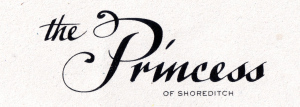
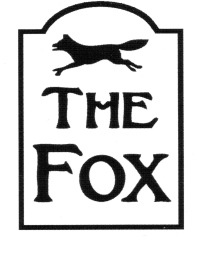
The Trafalgar in Greenwich is a big stuccoed Regency pub that juts over the Thames just downriver from the Royal Naval College and Hospital, one of the greatest building ensembles in Europe. They still serve whitebait, a Thing We like, every day; sometimes they have sausages flavored with kidney and stout. There also is a somewhat careworn and lovely pub within the old central covered market. Meantime operates the Greenwich Union as well as The Old Brewery, a public house and restaurant within the Royal Naval College itself. How did they wrangle that lease?
3. Beers to look for.
London traditionally has been famous for the quality of its beer due to the proximity of the Kentish hop fields, the quality of the water and the happy effect of keen competition in the big city. Most of the great London brewers are gone but two of the best, Fuller’s and Young’s, still produce a range of excellent beers. Like Bass, however, the actual Young’s brewery no longer exists and its beer is made ‘virtually,’ by other brewers.
Both Fuller’s and Young’s operate strings of pubs in and around London and they are good; the brewer’s logo appears on the signboard of its houses. Fuller’s London Pride may be the best of all the ‘ordinary’ bitters; ask for a pint of ‘Pride.’ Their ESB and 1845 ales are stronger and more flavorful if less refreshing, and when it can be found their porter is superb.
Young’s ordinary is good too, not as flavorful as Pride to our taste, but Young’s Special is special indeed and worth seeking out. Young’s also brews, or causes to be brewed, seasonal beers, sometimes its excellent porter; you may find summer ale, popular but not a favorite of ours, at this time of year.
Young’s now owns Charles Wells, or Wells owns Young’s, and the Wells ales also are good, both the flagship Bombardier and Eagle IPA, a refresher at 3.6% alcohol. The Combine now owns the Courage brand. Courage Best is good; Director’s is much, much better, and a favorite. Both and Young’s/Wells/Courage and Fuller’s sell excellent bottled ales.
The Shepherd Neame brewery, southeast of the Big Smoke in Kentish hop country, makes a range of good ales; their three constant casks are Master Brew, which is bland and boring, Spitfire, which is a favorite, and Bishops Finger Strong Ale (5% in cask, 5.4% in bottle), which is better yet. They own pubs and brew seasonals too.
The same basic scale goes for Greene King; their ordinary is Abbott Ale, which is definitely ordinary, but the boosted beer, Old Speckled Hen, is good, and Greene King IPA weighs in at only a little over 3% alcohol but tastes big.
Harveys in Lewisham produces another full line of ales. All of them are good if you can find them. Look for Armada, Elizabethan, Tom Paine and South Downs Ales.
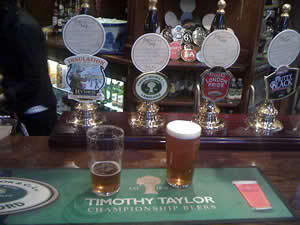
Timothy Taylor, based in West Yorkshire, is something of a miracle. They still brew mild ales, two of them, and their Landlord ‘Strong’ Pale Ale has only 4.3% alcohol but probably tastes better than any other cask ale from a biggish brewer in England. Lots of fresh and balanced flavor; really, really good. They own pubs, but only a few and none in London. You can, however, find Landlord in a number of nice public houses in and about the capital. Bottled Landlord is utterly insipid.
Another Yorkshire brewer, Black Sheep, makes good beer too. They do not compare to Taylor but neither does anyone else. Their Black Sheep premium ale is richer, deeper and sweeter than other good beers, and bottled Black Sheep is better than most bottled British beers.
Meantime in Greenwich is a new microbrewer of excellent ales, and you now can find the beer in central London too, mostly in the hipper East End. They brew thirteen varieties of beer, in addition to seasonals, including a strong (7.5%) IPA and two strong Porters, London (6.5%) and Hospital (8%). These are big, American style beers loaded with alcohol. Good versions come in big corked bottles.
A Note: If you want to read before you go, and you should, Nairn’s London, published back in 1966, remains unrivaled in its evocation of the urban landscape and provides pointers to many appealing public houses, some sadly departed.

